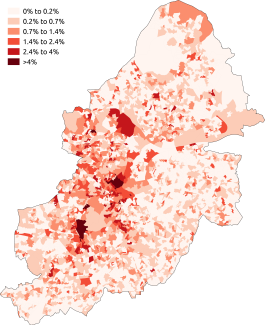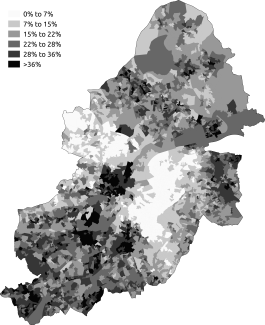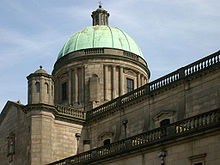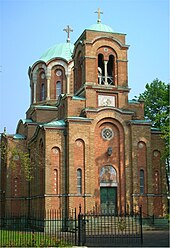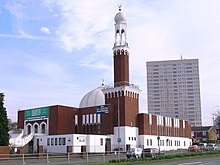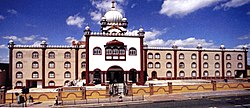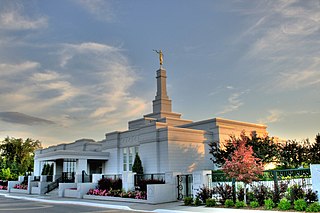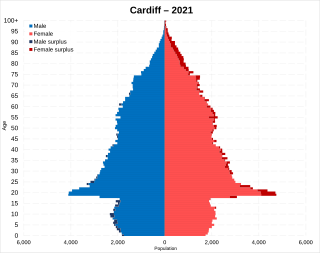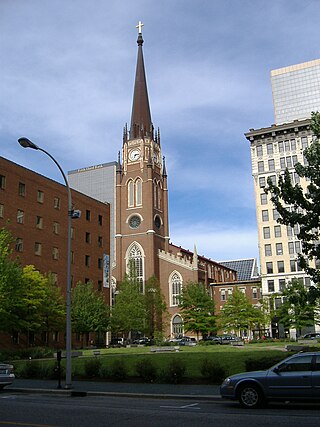Early history
Before Christianity
Although there were no large Roman settlements in the immediate area of modern-day Birmingham, there was a fort, Metchley Fort near the site of the University of Birmingham, and Icknield Street runs via this site through the western suburbs of the city. The Romano-British population undoubtedly worshipped at pagan temples such as that excavated at Coleshill a few miles outside the modern city boundary, which was possibly dedicated to Minerva or Mars , and that identified at Letocetum where Icknield Street crosses Watling Street between Birmingham and Lichfield, also apparently dedicated to Minerva .
In the later years of the Roman period, Christianity arrived in the area, although there is little evidence of Christian worship in the immediate Birmingham area at this time. However, when Anglo-Saxon tribes conquered what was to become England in the 5th century, they brought their pagan beliefs with them. Again there is little firm evidence for Anglo-Saxon worship in the area, perhaps because the Anglo-Saxons worshipped in sacred places outdoors rather than in buildings.
The Conversion of Mercia
Mercia, the Anglo-Saxon Kingdom in which Birmingham was situated, remained pagan for some decades after Saint Augustine had begun the conversion of England. However, under King Penda of Mercia, himself a pagan, Christian missionaries from Lindisfarne were allowed to preach in the kingdom (around 653) and following Penda's death, the rulers of Mercia became Christian and a Diocese of Mercia was created in 656. Part of this became the Diocese of Lichfield in 669 under Saint Chad. (Chad's relics were enshrined at Lichfield Cathedral until the Reformation after which they were kept in hiding until they were transferred to the new Catholic cathedral in Birmingham in 1841 ).
The Mediaeval Church

Birmingham's original parish church, St Martin in the Bull Ring, has been the site of a church since at least the 12th century, though the earliest parts of the present building date back only to around 1290. Within the modern city boundary, there are a number of other churches which date from the mediaeval period (although many, like St Martin's, were substantially rebuilt in the 19th century). They represent the original mediaeval parishes of the area, which were much larger than the modern parishes of the densely populated city.
In the mediaeval Diocese of Lichfield could be found
- Church of Saints Peter and Paul, Aston in Aston
- St Bartholomew's Church, Edgbaston
- St. Mary's Church, Handsworth
- St. Peter's Church, Harborne
- St Giles' in Sheldon
- Holy Trinity in Sutton Coldfield
In the Diocese of Worcester.
In addition to these parish churches, there was St John's chapel of ease at Deritend founded in 1381 (demolished by 1961), which, though only a short stroll from St Martin's, was in the parish of Aston. Householders in Deritend and Bordesley had the unusual right to elect their own chaplain - a right they continued to enjoy until 1890 when a specific act of parliament was required to regularise the situation .
The other main religious organisations in medieval Birmingham were a priory founded in the early 13th century known as the Priory of St Thomas of Canterbury in the area of today's Priory Queensway, and the Guild of the Holy Cross established in 1392, whose guildhall was on New Street.





